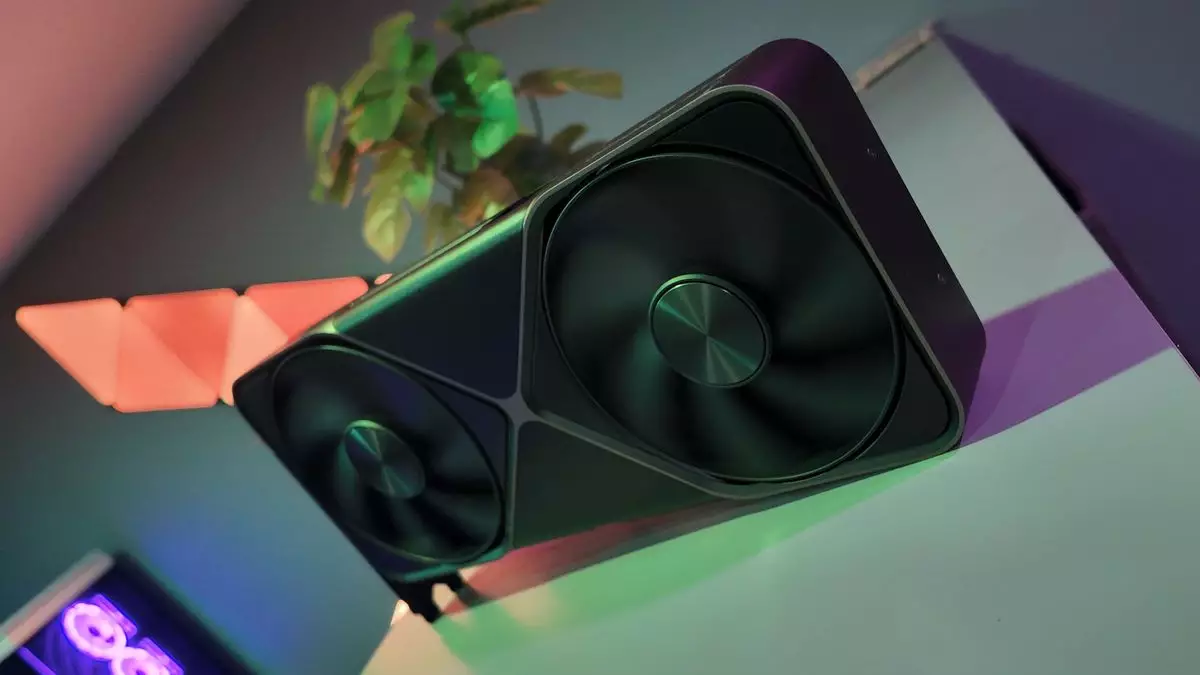Nvidia’s latest offerings, the RTX 5080 and RTX 5090 graphics cards, have recently been thrust into the limelight, but not just for their impressive specs and performance capabilities. Instead, an alarming wave of user-reported issues, particularly black screen failures, has started to overshadow the GPUs’ potential glory. As consumers begin to share their experiences, Nvidia has been prodded into action, declaring that they are currently investigating these emerging issues. This situation raises crucial questions about quality control, driver reliability, and consumer trust in one of the leading names in graphics technology.
The reports coming in from RTX 50-series owners present a murky picture filled with varied experiences and outcomes. The central issue appears to be unexpected black screens during seemingly routine tasks. Users have described these incidents occurring during resolution changes, system overloads, or when operating multiple monitors simultaneously. The unpredictability of these failures adds a level of frustration, as some users find their cards unrecognizable even after a hard reboot. This inconsistency raises concerns about whether the issues stem primarily from Nvidia’s software, the hardware itself, or perhaps even user error.
Interestingly enough, experiences can vary widely even among those who own the same model. While some have reported repeated malfunctions, others, like several reviewers and industry professionals, claim they have not encountered such issues, except for isolated incidents tied to specific circumstances, like switching between gaming and streaming applications. This dichotomy serves to complicate the narrative around the RTX 50-series, making it difficult to identify the root cause of the problems at hand.
The community’s response has been robust, with forums flooded with testimonials and troubleshooting attempts. Social media platforms, particularly Reddit and Nvidia’s own forums, are teeming with reports from affected users. Along with these anecdotal accounts, video content on platforms like YouTube has surfaced, documenting firsthand experiences while also exploring possible fixes. Hence, while the core issue seems prominent, the community is actively working together to address it. Videos, such as those from tech creators like JayzTwoCents and Boosted Media, not only outline the problems but also attempt to propose solutions—whether they involve system adjustments or hardware configurations.
However, it counters the narrative of Nvidia’s previous impeccable reputation. For years, Nvidia has prided itself on maintaining stringent quality control, thus raising the stakes when issues do arise. The disparity between the experiences of everyday users and professional reviewers inevitably leads to a degree of skepticism regarding Nvidia’s quality assurance practices with the RTX 50-series.
An examination of the reports indicates that the issues may correlate closely with the recent driver release—version 572.16. While such major updates are typically met with optimism, this particular version seems to be a double-edged sword. Users have reported black screens and even “permanent” card failures, bringing into question the stability and reliability of this driver. If enacted without thorough testing, a significant driver rollout can adversely impact countless users.
Furthermore, it is vital to highlight that reports are not solely limited to the RTX 50-series; RTX 40-series owners have also come forward with grievances about this same driver. This raises doubts about whether Nvidia properly accounted for legacy hardware while developing its new series of GPUs.
While Nvidia has yet to officially resolve or even acknowledge the full scale of the issues at hand, interim solutions have begun to bubble up from the user community. Recommendations primarily involve utilizing Display Driver Uninstaller (DDU) to perform a full wipe of existing driver data, followed by a fresh installation of the GPU drivers. This procedure aims to eliminate any potential conflicts from residual software that may be disabling the graphics cards.
Additionally, users have been advised to ensure their graphics settings, particularly the PCIe configurations, are optimized for their setups, especially given that some reports cite signals issues with PCIe compatibility. These guidelines underline the reality that, in many circumstances, fixing the problem may lie within the users’ control, as they grapple with the complexities of optimization and maintenance in high-performance computing environments.
At this point, it remains to be seen how Nvidia will respond to these queries and complaints. The hope for many is that Nvidia will soon release a clarifying statement or driver update to restore faith in its cutting-edge GPUs and reassure consumers that their investments will not be in vain. Until such measures are taken, Nvidia enthusiasts are left in a rather precarious position, balancing the allure of advanced graphical capabilities against the specter of system instability.

